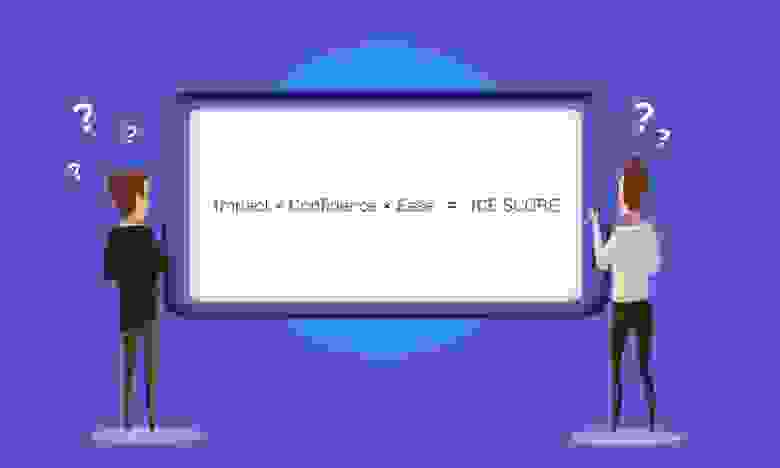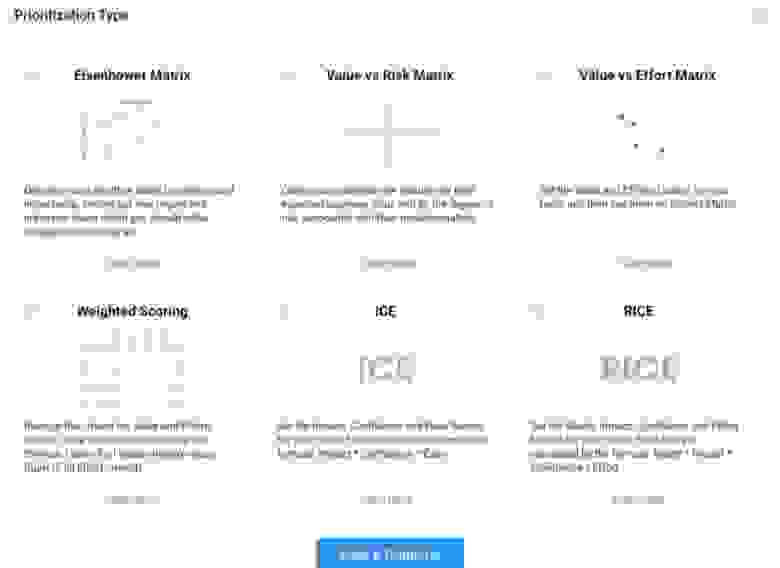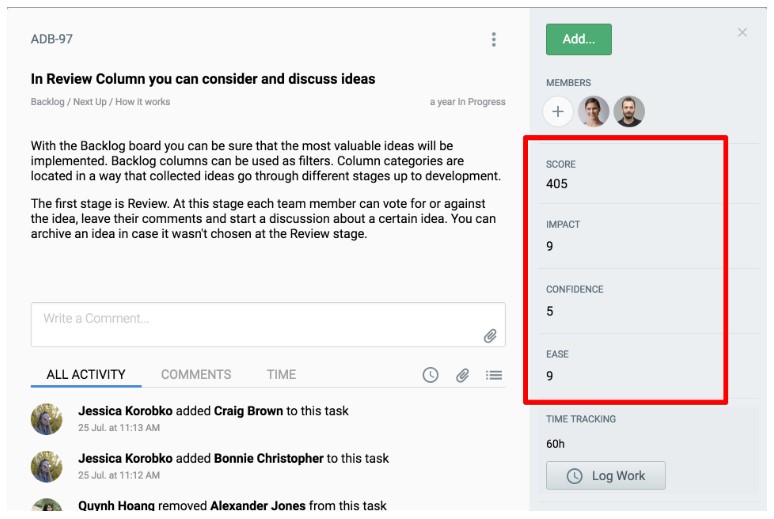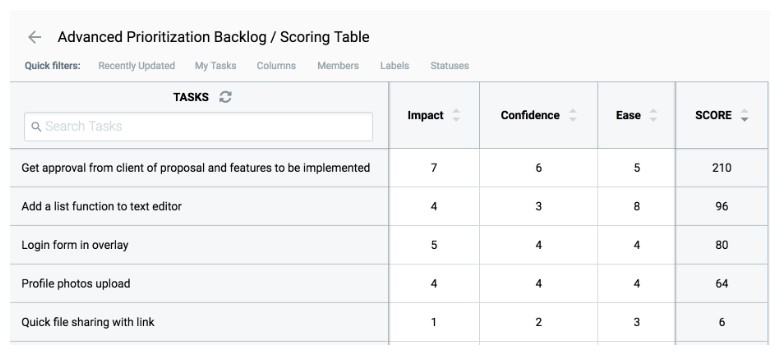It is difficult to imagine a situation when a product manager does not face prioritization challenges. Can you quickly decide what to place to the first place?
Any product timeline requires a clear order and only qualitatively decomposed and managed tasks will lead you to a decent and successful product release. In this case, you will not successfully perform without a powerful prioritization. Where to start and how to define the most appropriate prioritization method? Especially if you are a newcomer in the product management world? Here we describe the ICE scoring prioritization method that empowers product managers to choose the right features for development.

It’s probably not the first time you are dealing with prioritization of features and tasks as it is, so here we will not describe other simpler techniques in detail. Let's just list at least the most basic ones that were briefly explained in our previous article about Lean prioritization:
Ice model is more advanced and complex.

The ICE prioritization methodology was invented by Sean Ellis who is also famous for helping grow companies and for coining the term Growth Hacking.
Initially, ICE scoring was intended to prioritize growth experiments, but today it is broadly used for regular project ideas.
If saying briefly, ICE stands for:

You are able to calculate the score per idea, according to the formula:

The values are rated on a relative scale of 1–10 so as not to over-weigh any of them. As long the rating stays consistent, you may choose what do 1–10 mean.
Imagine a common feature «Banner on a site page»:
Actually, the ICE scoring model is a system of relative prioritization and it is not intended to be the perfect system. It's aimed basically on preventing you from being bogged down in trying to fine-tune the score too much. It can be considered as a minimum viable prioritization framework.
Product managers often criticize ICE scoring for its subjectiveness. Among the most obvious, let's define the following:
Some of the advanced product management tools allow applying ICE prioritization framework. For example, you may find it in Hygger.
First, you have to collect all your brilliant ideas and product features on a Kanban-alike board. Convenient horizontal Swimlanes and Labels will help to structure them. The process of working with features can be also adjusted with the help of Columns. For example, the following workflow can be created:
Hygger proposes you to choose ICE score framework among the other scoring types.

After choosing the ICE framework, you should evaluate every feature with Impact, Confidence, and Ease and get the score.

Look at all features in the table as well:

You sort all features by the score, get winners from the top and send them to Development with the Push option.

And that’s it!
The ICE model is one of the modern and interesting ways to test your ideas and features and handle your product backlog easily.
ICE scoring model is aimed to focus your efforts on moving quickly and having the biggest impact on your users. The ICE framework at Hygger looks really helpful to quickly make decisions on what to test and when. Try this scoring model and you'll find how it works in the context of a real growth process.
Would you like to master your prioritization skills? All right, next time we will share some interesting facts about the other prioritization model — RICE scoring. Stay in touch!
Any product timeline requires a clear order and only qualitatively decomposed and managed tasks will lead you to a decent and successful product release. In this case, you will not successfully perform without a powerful prioritization. Where to start and how to define the most appropriate prioritization method? Especially if you are a newcomer in the product management world? Here we describe the ICE scoring prioritization method that empowers product managers to choose the right features for development.

It’s probably not the first time you are dealing with prioritization of features and tasks as it is, so here we will not describe other simpler techniques in detail. Let's just list at least the most basic ones that were briefly explained in our previous article about Lean prioritization:
- MoSCoW prioritization technique
- Kano model
- Value vs Effort method
- Story mapping method
Ice model is more advanced and complex.

ICE scoring: where are the roots?
The ICE prioritization methodology was invented by Sean Ellis who is also famous for helping grow companies and for coining the term Growth Hacking.
Initially, ICE scoring was intended to prioritize growth experiments, but today it is broadly used for regular project ideas.
ICE scoring: what does it mean?
If saying briefly, ICE stands for:
- Impact — how impactful do I expect a feature to be?
- Confidence — how sure am I that the feature will prove my hypothesis?
- Ease — how easily can I get launch this feature?

You are able to calculate the score per idea, according to the formula:

The values are rated on a relative scale of 1–10 so as not to over-weigh any of them. As long the rating stays consistent, you may choose what do 1–10 mean.
Imagine a common feature «Banner on a site page»:
- Impact: How impactful it will be? What our users will have with it? What will it give to our goals?
- Confidence: How can I be sure that the banner will lead to such an improvement I described in Impact?
- Ease: How easily will it be to develop, test and launch the banner?
The purpose of ICE scoring
Actually, the ICE scoring model is a system of relative prioritization and it is not intended to be the perfect system. It's aimed basically on preventing you from being bogged down in trying to fine-tune the score too much. It can be considered as a minimum viable prioritization framework.
ICE scoring: the bottlenecks
Product managers often criticize ICE scoring for its subjectiveness. Among the most obvious, let's define the following:
- you can score the same feature differently at different time. It may affect the final prioritization list.
- if different people score the feature – all of them will score it differently.
- team members who want their features prioritized can manipulate scores to get features approved.
How to apply ICE prioritization?
Some of the advanced product management tools allow applying ICE prioritization framework. For example, you may find it in Hygger.
First, you have to collect all your brilliant ideas and product features on a Kanban-alike board. Convenient horizontal Swimlanes and Labels will help to structure them. The process of working with features can be also adjusted with the help of Columns. For example, the following workflow can be created:
- Backlog where you collect all your ideas and features
- Next Up where you put the items you want to work on
- Specification where you combine requirements and write features specifications
- The development where you move the features for development and you can track their status
- Done – your features were successfully delivered to the users.
Hygger proposes you to choose ICE score framework among the other scoring types.

After choosing the ICE framework, you should evaluate every feature with Impact, Confidence, and Ease and get the score.

Look at all features in the table as well:

You sort all features by the score, get winners from the top and send them to Development with the Push option.

And that’s it!
Final thoughts about ICE
The ICE model is one of the modern and interesting ways to test your ideas and features and handle your product backlog easily.
ICE scoring model is aimed to focus your efforts on moving quickly and having the biggest impact on your users. The ICE framework at Hygger looks really helpful to quickly make decisions on what to test and when. Try this scoring model and you'll find how it works in the context of a real growth process.
Would you like to master your prioritization skills? All right, next time we will share some interesting facts about the other prioritization model — RICE scoring. Stay in touch!